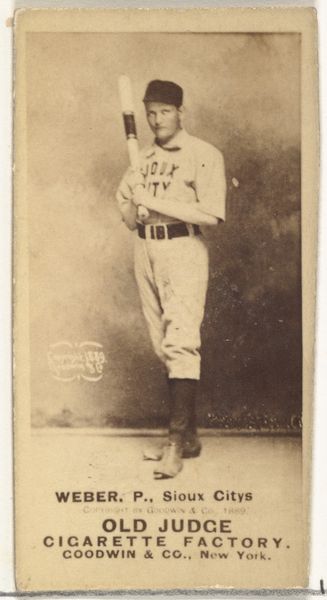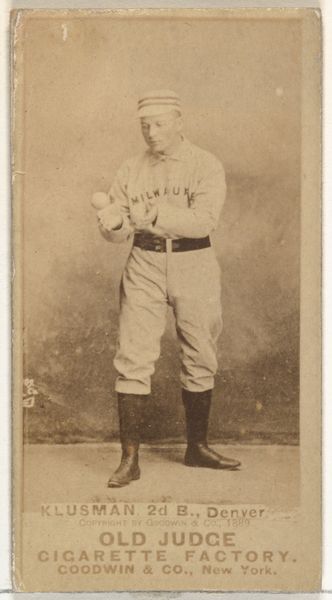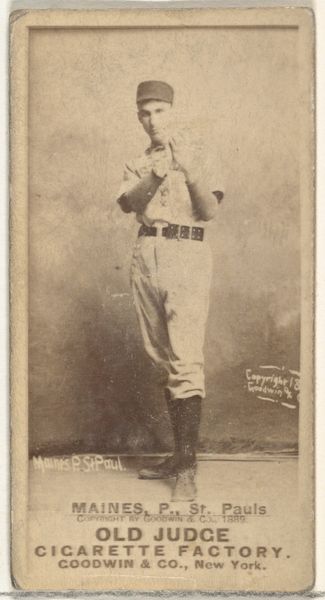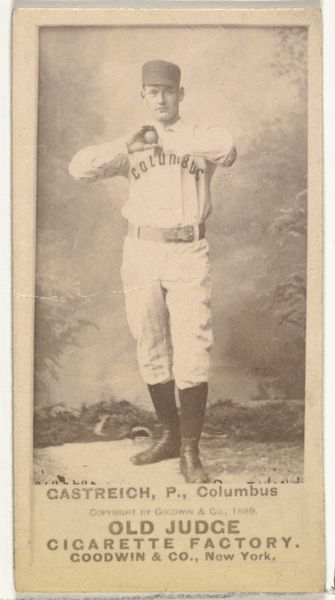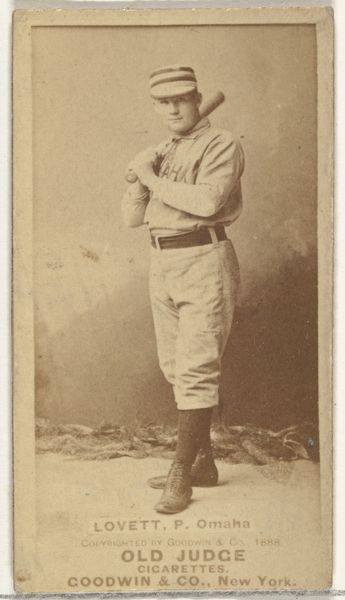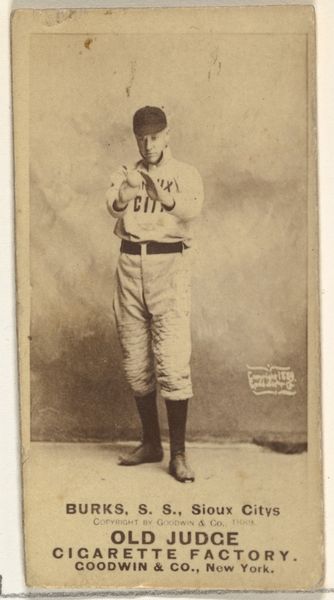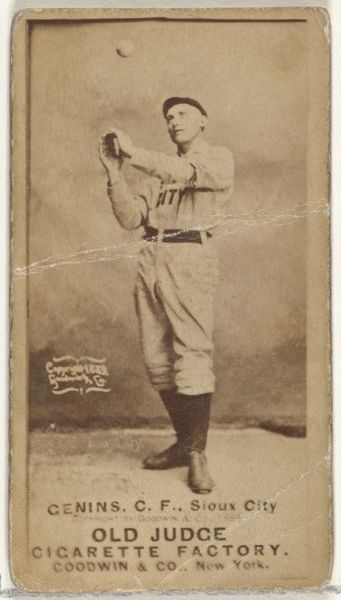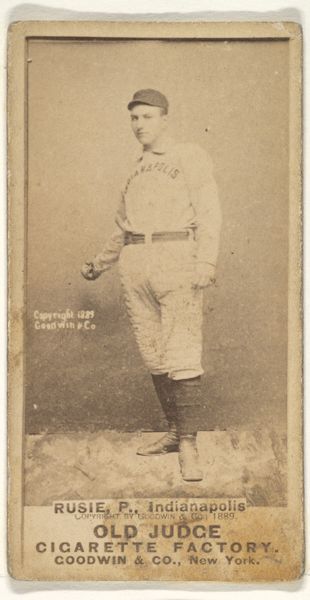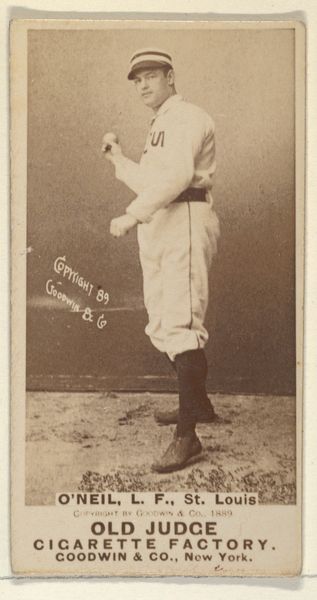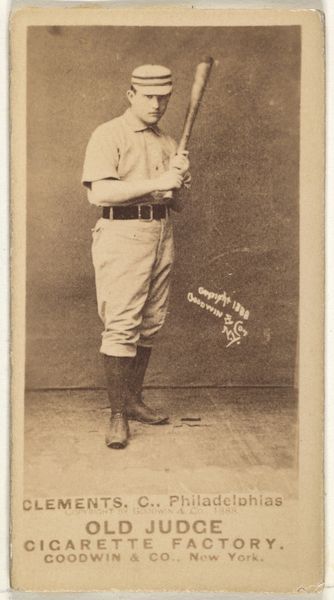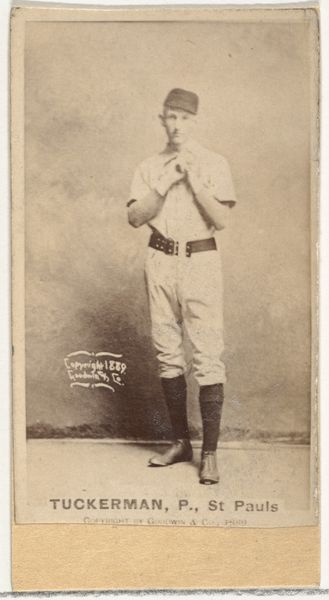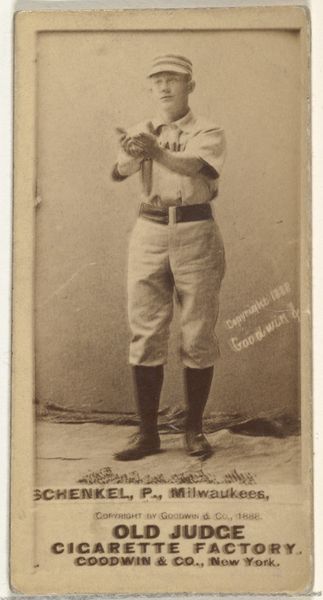
William Benjamin "Shorty" Fuller, Shortstop, St. Louis Browns, from the Old Judge series (N172) for Old Judge Cigarettes 1889
0:00
0:00
print, photography, albumen-print
#
portrait
# print
#
baseball
#
photography
#
19th century
#
men
#
athlete
#
albumen-print
Dimensions: sheet: 2 11/16 x 1 3/8 in. (6.9 x 3.5 cm)
Copyright: Public Domain
Curator: What a find! This is "William Benjamin 'Shorty' Fuller, Shortstop, St. Louis Browns," a baseball card from the Old Judge series, produced by Goodwin & Company in 1889. It’s an albumen print, a type of photography very popular back then. Editor: There’s something melancholy about this. The sepia tones, the formal pose... he looks less like a sportsman and more like he’s about to deliver a Shakespearean monologue. All he's missing is a skull! Curator: It’s fascinating how they used portraiture conventions for what was essentially a form of advertising. Imagine, baseball cards used to promote cigarettes! Editor: It speaks volumes about how marketing operates—latching onto emerging cultural trends. Baseball's popularity exploded in the late 19th century, simultaneously when anxieties about industrialization and masculinity were on the rise. Sport as a reaffirmation of older ideals... It is deeply embedded within a narrative of American exceptionalism and social power, which sometimes fails to address complex class structures and labor. Curator: He's suspended between pitches in the photograph. He is wearing the uniform, but I'm sure this took a couple of takes, especially considering the technology available at the time! Did he know that he would become part of a collectible cultural archive, this "Shorty" Fuller from St. Louis? I think about how the ephemeral becomes the eternal, which fascinates me. Editor: Think of the millions of players—the majority of whom aren't immortalized in cards. It brings to the surface how deeply linked celebrity, capitalist consumption, and image manipulation are. Who gets remembered, and more importantly, *how*? What about the unnamed laborers that produce these artifacts of memory? Curator: Well, these prints helped to memorialize him, as well as the love for the game itself. Even though he is linked to the advertisement of cigarettes, his contribution to baseball is just as much of the focus. He's preserved because, in a way, he helped invent and materialize modern American sport and culture! Editor: I appreciate your emphasis on beauty in art; sometimes I can forget the aesthetics while digging into the history. Thank you. Curator: Absolutely, these little glimpses from the past provide new insights for our future and our own art today.
Comments
No comments
Be the first to comment and join the conversation on the ultimate creative platform.
